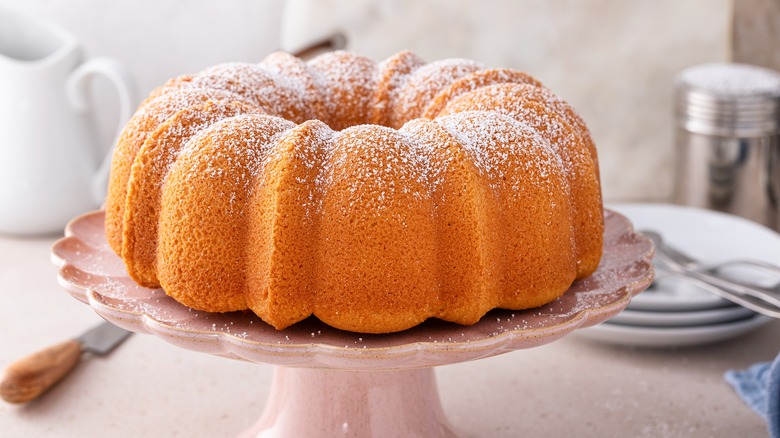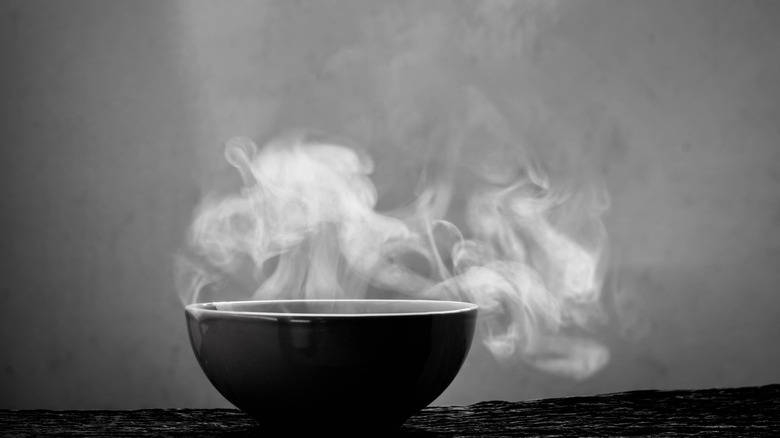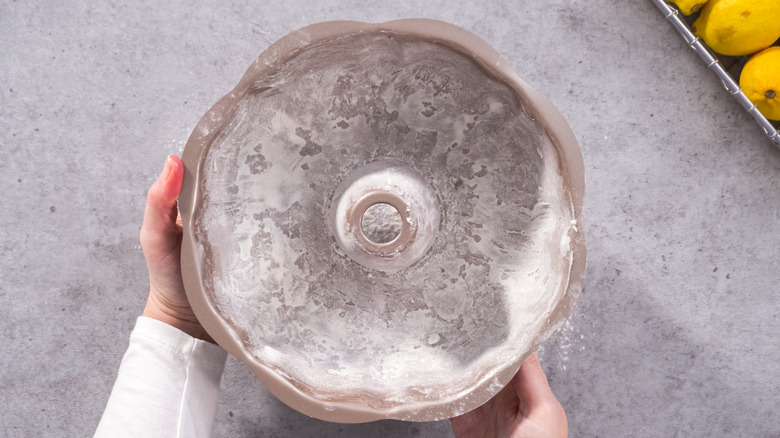The Water Trick That Gets Cakes Out Of Bundt Pans Easily
We're all guilty of holding our breath when the time comes to remove desserts from their pans. After all, there are few greater disasters on baking competition shows than stuck or broken pastry. When it comes to cake making, bundt pans are particularly notorious. Between their trademark center hole and their ornate designs, the metal's many crevices are hard to grease and quick to stick.
Thankfully, unlike on TV, home cooks don't have to scrap or redo their hard work when going gets tough. All you need to do is take a deep breath and heat up some water. The temperature and the steam will help get your bake back on track.
First, make sure you've run the edge of a knife or spatula around the edges of the cooled dessert to loosen it as much as possible. Then, fill a bowl with very hot water and rest the bottom of the pan inside, being careful not to get water on the actual pastry. You can also soak a tea towel in boiling water and wrap it around the bottom of the tin for a similar heating effect. After a 15-minute wait, remove the pan from the heat and carefully invert the baked good over a cooling rack to remove your cake.
The magic of heat
This water trick relies on the power of heat to release the cake from the mold. There are multiple theories as to why it's successful — including the idea that the warmth melts the fat that was used to grease the tin. More importantly, the metal also expands as it re-heats, separating from the cake as it does so.
Some home bakers have even had success with a hair dryer, using the hot air to warm stubborn areas of the bundt. Others flip the method on its head, placing the dampened tea towel over the top of the tin to steam and reheat the treat. We would recommend adding a protective layer of foil over the entire pan before doing so to protect your pastry.
Though a slightly riskier approach, you can try placing the bundt back in a 250-degree Fahrenheit oven to warm back up — just keep it quick to avoid drying it out. Make sure to take things slow and remain patient. While you wait for the inverted cake to release over the cooling rack, tap the mold to encourage the sides to release.
Preventing stuck-on cake
Before you start relying on hot water to salvage your bake, we should remind you that the best defense is a good offense. In other words, you should keep greasing those cake pans. (Unless you're making angel food cake, in which case, you should keep the metal bare to help the airy batter rise.)
That doesn't mean you have to stick with the classic butter and flour coating, though. If you're making a chocolate version, try dusting the greased pan with unsweetened cocoa powder to complement the recipe's flavors and blend with the color of the dessert. For a sweeter crust, use granulated sugar or, as chef Ina Garten prefers, turbinado sugar. To amplify nutty notes, like those in Ina Garten's sour cream coffee cake, you could try swapping in almond or walnut flour to dust the tin.
You should also make sure to thoroughly clean the ornate pans before you use them. Batter will stick to old crumbs and grease from your last bake, making the bundt shape even trickier to navigate. And, if all else fails, consider making a glaze or frosting to cover up any imperfections.



